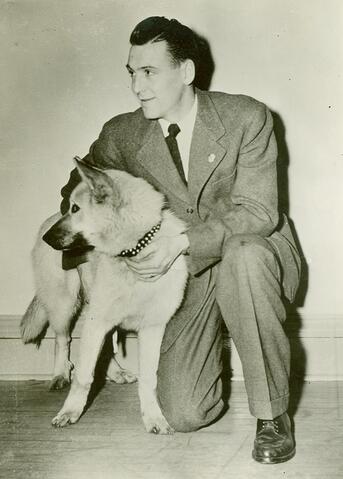
Área de título y declaración de responsabilidad
Título apropiado
Sports - Mascots
Tipo general de material
- Graphic material
Título paralelo
Otra información de título
Título declaración de responsabilidad
Título notas
Nivel de descripción
Item
Institución archivística
Código de referencia
Área de edición
Declaración de edición
Declaración de responsabilidad de edición
Área de detalles específicos de la clase de material
Mención de la escala (cartográfica)
Mención de proyección (cartográfica)
Mención de coordenadas (cartográfica)
Mención de la escala (arquitectónica)
Jurisdicción de emisión y denominación (filatélico)
Área de fechas de creación
Fecha(s)
-
Feb. 1946 (Criação)
Área de descripción física
Descripción física
1 photograph : b&w ; 15.5 x 11.5 cm
Área de series editoriales
Título apropiado de las series del editor
Títulos paralelos de serie editorial
Otra información de título de las series editoriales
Declaración de responsabilidad relativa a las series editoriales
Numeración dentro de la serie editorial
Nota en las series editoriales
Área de descripción del archivo
Nombre del productor
Historial de custodia
Alcance y contenido
Unidentified man holding a husky dog, thought to be the first Huskie mascot.
Bio/Historical Note: Green and white were established as the official colors of U of S sports teams in 1909-1910, but the Huskies name did not appear at that time. Teams were generally referred to as “varsity” or “the green and white” when they played or appeared in media. The name “Huskies” began appearing in the 1930s, first in a September 1932 article in the StarPhoenix. Media caught onto the name and continued to use it; the name appeared in the 1932-1933 edition of The Greystone - the U of S yearbook at the time - along with a photo of the men’s hockey team in uniform with “Huskies” across the front. The origin of the Huskie name is unclear, but women’s teams were generally referred to as the “Huskiettes,” while men were the Huskies. On 15 Feb. 1946, The Sheaf printed a photo of an unidentified man holding a husky canine on campus, thought to be the first mascot. The husky appeared at various sports functions to lead the players onto the field and watch from the sidelines — on a leash. The late 1970s and early 1980s were the first time that the mascot appeared as a human dressed in costume. The women’s hockey team co-coach and trainer in the 1970s, Murray Gordon, began wearing a dog outfit and appearing at hockey games as “Hymie the Huskie.” Gordon also dressed up for football games and other campus events. The Huskie was generally accepted as the official mascot by this point, and appeared in 1980 on the men’s hockey team sweaters as a side profile of a dog’s head and neck. By the 1990s however, an outward-facing head of a dog appeared on all teams’ uniforms. The first official mascot costumes were created in the 1980s as well. A woman named Elva Finlay created a Huskies mascot costume in 1985 and restored a 1980 version of the costume that same year. The two new mascot costumes were worn by two university students, Lori Winter and Chris Mirwald, who attended U of S events and Huskie games. Today, the Huskies mascot is known as “Howler” and there are multiple people employed to dress in the Howler costume as the U of S mascot.

